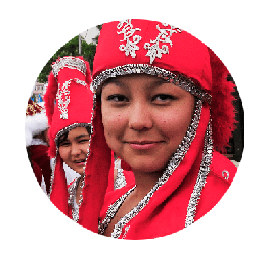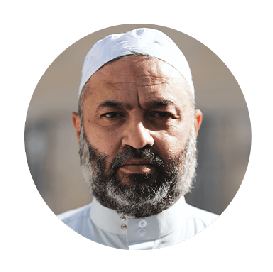Frequently Asked Questions About the Least-Reached
Understanding Those Without Access

The least-reached are those without access to a church that preaches the gospel in their language and worships in a way that’s relevant in their culture. Conversely, to be considered reached, a people group must have access to a local fellowship of believers that proclaims the good news in their language and culture.
- Access refers to proximity. To be considered “reached,” a community must be within a reasonable distance of a church that proclaims the good news; the mere existence of churches within a people group does not necessarily signify that every community within that group has access to the gospel.
- A church is vital as the local body of Christ is central to the spread of the gospel. While the good news can be proclaimed widely through means such as radio and the internet, the presence of a fellowship of believers within a community enables people to not only hear the message of Christ but experience the gospel as it is lived out by the local church. A gathering of believers also provides the setting for discipleship and training for ministry, enabling those who trust in Christ to grow in faith and be equipped to make disciples of others.
- Language is a key consideration as the message of Christ must be communicated in a way that is understood by the members of the community. Since this news of eternal hope is best comprehended in a person’s first language, to be reached requires access to the gospel in a community’s indigenous (or heart) language, not only in a trade language.
- Culture plays an important, though sometimes less-obvious role. Though all believers are made one in Christ, differences in culture can prevent members of least-reached communities from being effectively reached by existing churches in the area. A worker who ministered in the Middle East shares that in his place of service, a historical church existed throughout the country, but due to differences in culture between this church and the surrounding Muslim community, it was very unlikely that a Muslim would enter a local church even if he or she were interested in the gospel. A church of Muslim-background believers was key in welcoming and sharing the good news with the majority community.
In interest of being good steward of our resources, we’ve chosen to rely on the statistics collected by trustworthy organizations such as Joshua Project to help us determine which groups are least-reached. We also consider the realities facing specific communities: For example, numerous churches may exist among a people group, but if a community within that group lives several hours from the nearest fellowship of believers, it still lacks access to the gospel.

The highest concentration of least-reached people can be found in the 10/40 Window, a region stretching from 10 degrees to 40 degrees north in latitude across North Africa, the Middle East and much of Asia. However, those without access to the good news live throughout the world. People groups without a culturally relevant gospel witness live not only in countries dominated by religions other than Christianity, but in nations with prominent Christian populations. Many are immigrants or refugees from countries in the 10/40 Window, and they remain without access to the message Christ because the churches that exists in the areas where they live don’t communicate in their language and in ways that make sense in their culture.
The majority of the least-reached belong to Muslim, Hindu and Buddhist people groups. Others follow ethnic religions or are nonreligious.
Among the approximately 70 million people worldwide who use a sign language as their first or primary language, no more than two percent have been introduced to the gospel. The other 98 percent don’t have access to a church that preaches the good news in their language and worships in a way that’s relevant in their culture. And because the Deaf are often separated from the larger hearing society around them, they have even fewer opportunities to learn of the good news. Even if a Deaf person lives in a community with many churches, a significant number of Christians and access to printed Scripture, he or she is unlikely to be reached with the gospel. Learn more about the Deaf.
The heart of our mission has always been to establish churches among people who don’t have access to the gospel proclaimed in a way they can understand it. So, when were considered what term to use to describe these people, we sought to communicate our desire to take the good news to groups with the very least opportunity to learn of the transforming message of the gospel.
In the latter part of the 20th century, the term “unreached” emerged as a means to describe people groups among which there was not a community of indigenous followers of Christ large enough and with adequate resources to share the gospel with the entire group. Often, an unreached people group was (and still is) defined as one with a population that is under 2% evangelical Christian.
While this concept certainly resonated with us as an organization, Christar continued to focus on a more specific outcome: We wanted to reach the groups with the very least opportunity to learn of the transforming message of the gospel. As we sought to effectively communicate our passion to see churches established among communities of people that previously had no culturally relevant gospel witness, we realized we needed a new term—one that described groups that not only have few Christians, but are also without a means to learn of the good news.
In 1999, we began using “least-reached” to describe these groups: those without access to a church that preaches the gospel in their language and that worships in a way that’s relevant in their culture. It emerged out of our firm belief that no one should be without opportunity to hear and respond to the good news, and has since served as a guiding definition that has shaped the focus of our efforts.
This term both narrows and broadens our ministry. It hones our focus on the groups that are most cut off from the gospel. But it also gives us freedom to minister, without veering from our vision, in communities of people that may not be categorized as unreached but who remain cut off from the message of Christ communicated in their language and culture.
For example, it enables us to serve among people groups that are more than 2% evangelical but have entire communities where there is no access to the gospel in a way that is understandable. These communities remain without opportunity to learn of the message of Christ through a local church within their own people group that preaches the gospel. If no one intentionally brings the good news to them, they are unlikely to encounter it within their daily life or experience.
Our vision at Christar is to cultivate Christ-honoring transformation in communities where He is yet to be worshipped. Carrying out that vision involves not only proclaiming the gospel but establishing churches that mature and eventually reproduce—a process we call the Cycle of Transformation. Christar workers are involved throughout this cycle, first living as the local body of Christ and seeking to bless and serve their communities, and then, by God’s grace, discipling those who trust in Jesus, helping them gather to worship and supporting them as they begin to reach out to others. In communities with little gospel influence, the assistance of cross-cultural workers is key in enabling believers to grow in faith and gain a vision for reaching others.
